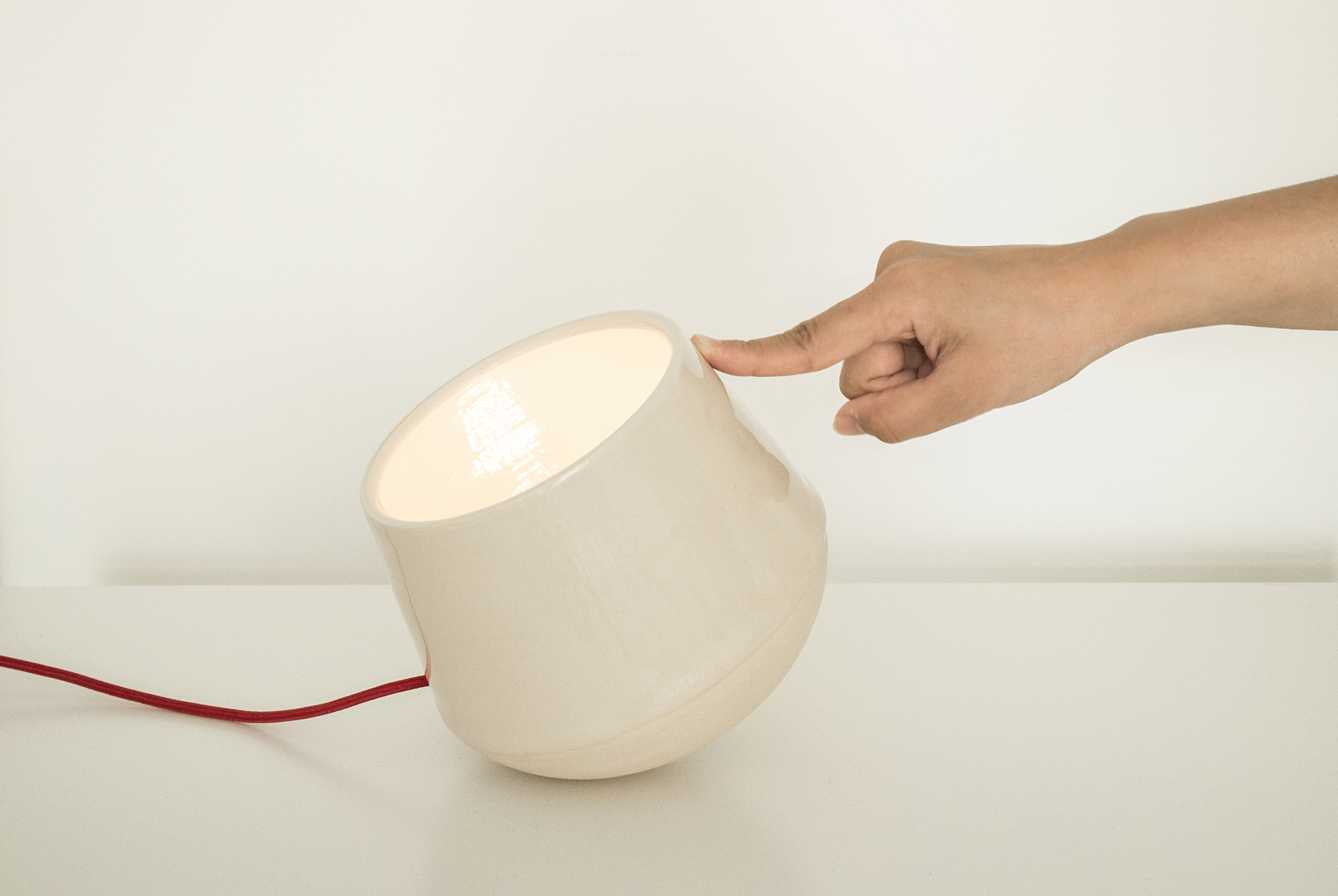
Electronic Ceramic
2015
As making and hacking culture flourish, we observe designers borrowing techniques from traditional craft to build upon digital fabrication processes. So called “digital craft”, this practice seeks to apply the knowledge distilled through many centuries of craft practice to the nascent open electronics movement. Contributing to the domain, this collaboration investigates the confluence of craft and design processes to develop interactive interfaces and objects. Unlike most digital craft research, this investigation does not blend craft and design processes into a single practice. Rather, under a umbrella plan of developing an interactive lamp, both crafter and designer engage in individual explorations within their own fields, thereafter coming together for assembly and evaluation.
This iterative process of assembly and reassembly yielded surprises for both designer and crafter. The varying weight, size, texture, color and form of each ceramic part moved the interaction design in different directions; pushing the designer to develop new models of interaction for each new ceramic piece. Simultaneously, the integration of electronics, lighting and digital interactions engaged the crafter to experiment with new forms, colors and glazes.
The object thus becomes a locus of critical reflection for both creative practices, prompting thoughts around craft and tangible interaction design.
Lamp I, Hue Lamp
The rounded form of the ceramic body provided the affordance for users to interact with the lamp by picking it up. In this model, the light's hue is affected by the direction of the tilt, while the hue's saturation is affected by the tilt's magnitude.
The rounded form of the ceramic body provided the affordance for users to interact with the lamp by picking it up. In this model, the light's hue is affected by the direction of the tilt, while the hue's saturation is affected by the tilt's magnitude.

Lamp II, Bedside therapy lamp
The electronics were encapsulated into a compact laser-cut chassis, which is clamped into the ceramic body with a brass bolt. Lamp II's larger size and form provide the affordance of pivoting the lamp on its base; tilting in opposite directions toggle between blue therapy light (470nm) and daylight (6500K), while the direction of tilt affects the intensity of light.
The electronics were encapsulated into a compact laser-cut chassis, which is clamped into the ceramic body with a brass bolt. Lamp II's larger size and form provide the affordance of pivoting the lamp on its base; tilting in opposite directions toggle between blue therapy light (470nm) and daylight (6500K), while the direction of tilt affects the intensity of light.

Lamp III, Roly Poly lamp
A custom PCB and 3D printed housing was fabricated for the roly poly base. Nudging the lamp brightens the light, while gently resting it on its side dims it.
A custom PCB and 3D printed housing was fabricated for the roly poly base. Nudging the lamp brightens the light, while gently resting it on its side dims it.

